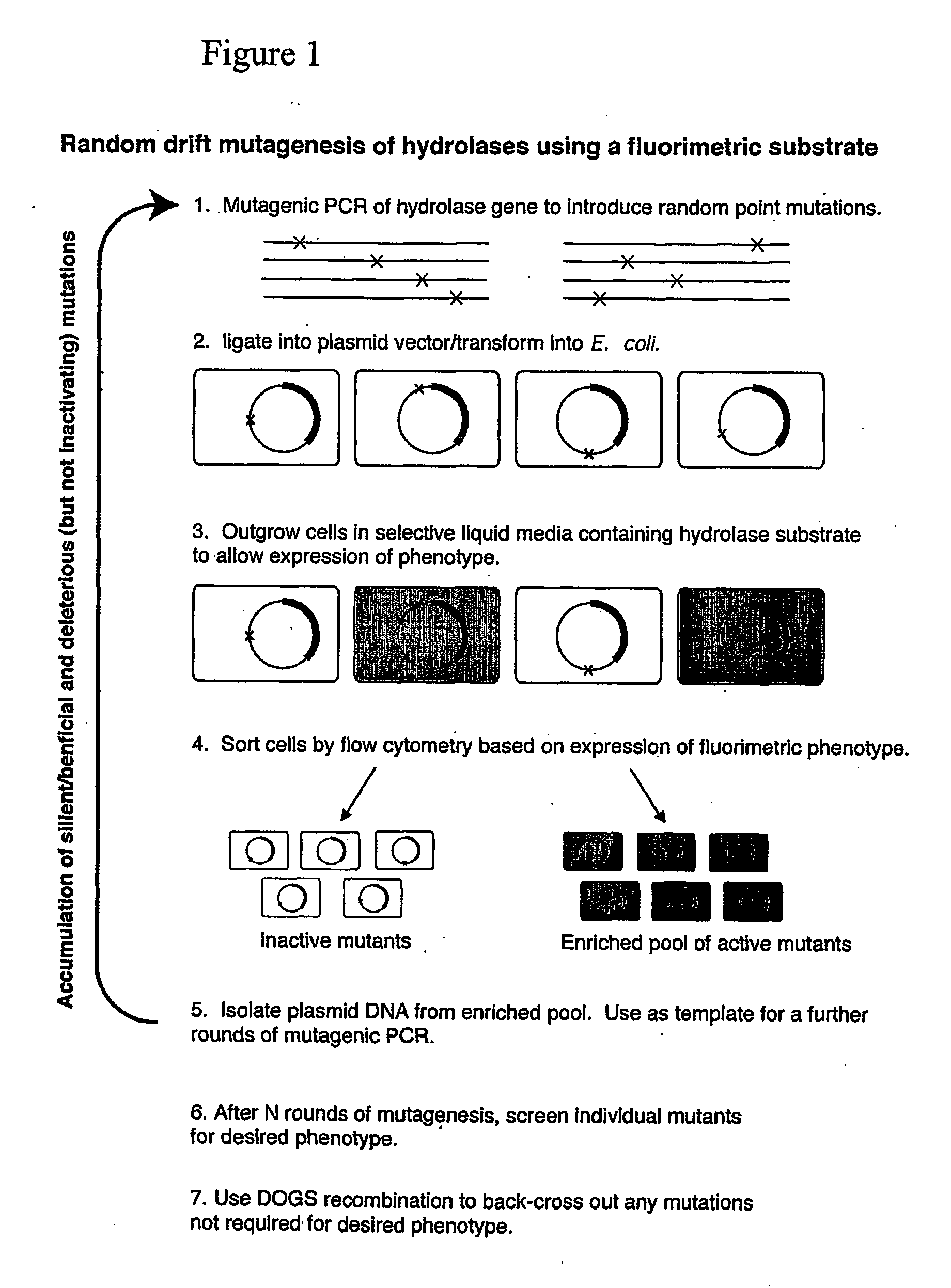Random Drift Mutagenesis
- Summary
- Abstract
- Description
- Claims
- Application Information
AI Technical Summary
Benefits of technology
Problems solved by technology
Method used
Image
Examples
examples
[0062] The experiment used the gene for a thermostable enzyme and a relatively inexpensive substrate. The method was also be applied it to the gene for Dictyoglomus XynB enzyme (Morris et al. Cloning of the xynB gene from Dictyoglomus thermophilum strain Rt46B.1 and action of the gene-product on kraft pulp. Appl. Environ. Microbiol. 64:1759-1765, 1998) that is a candidate in the pulp bleaching area (and would use a custom-synthesized substrate in the mutagenesis experiments).
Experimental and Techniques
[0063] Gene: Caldicellulosiruptor saccharolyticus β-glucosidase, bglA (Love et al. Sequence structure and expression of a cloned β-glucosidase from an extreme thermophile. Mol Gen Genet. 213: 84-92, 1988); Substrate: β-D-chloroindolyl-galactoside (X-gal) or β-D-chloroindolyl-glucose (X-glu). Cleavage of these commercial substrates by hydrolases such as BglA results in the precipitation of insoluble indigo, in our case, inside the cell. For all experiments the bglA gene was ligated i...
PUM
| Property | Measurement | Unit |
|---|---|---|
| Fluorescence | aaaaa | aaaaa |
Abstract
Description
Claims
Application Information
 Login to View More
Login to View More - R&D
- Intellectual Property
- Life Sciences
- Materials
- Tech Scout
- Unparalleled Data Quality
- Higher Quality Content
- 60% Fewer Hallucinations
Browse by: Latest US Patents, China's latest patents, Technical Efficacy Thesaurus, Application Domain, Technology Topic, Popular Technical Reports.
© 2025 PatSnap. All rights reserved.Legal|Privacy policy|Modern Slavery Act Transparency Statement|Sitemap|About US| Contact US: help@patsnap.com



